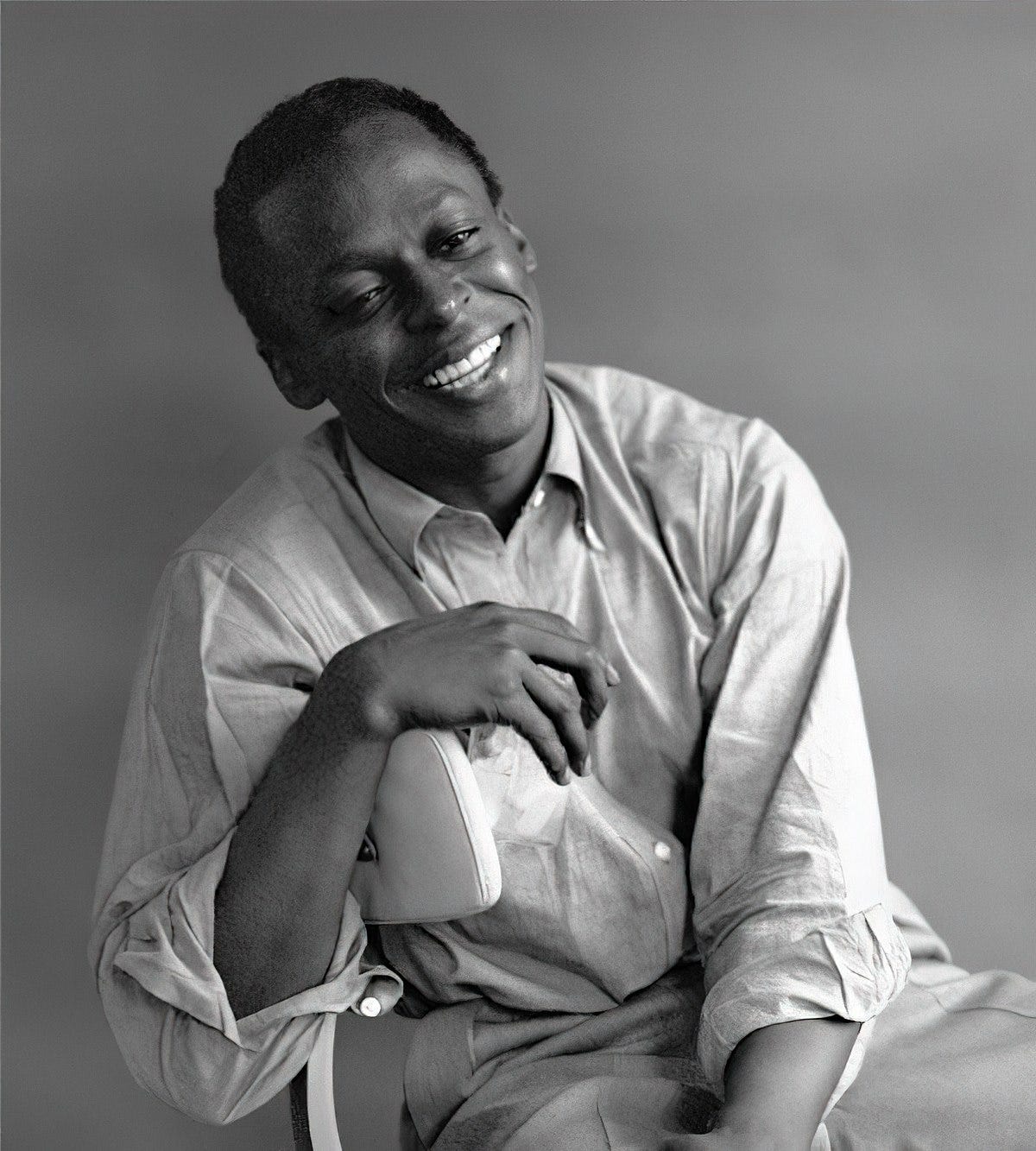Sound is empathy.
That is because I can see what you see, but not hear what you hear.
The voice is invisible, but has a visceral impact.
If you hear your own voice playback to you for the first time, you are likely to be taken aback by how you sound.
The first time I heard my own voice was when I was a kid. I put two corded telephones onto each ear as I mumbled some random noise. I laughed hysterically at how much I sounded like a chipmunk.
When I was about 11 or 12, my parents bought me a handheld tape recorder. Discovering the red button was like magic. I would record all kinds of everyday sounds. Unlike photography, recording the sound of someone felt like you were capturing the soul of a person—even if was the sound of my dad snoring, and my mom and I laughing uncontrollably.
Voice is the result of conscious intent, energiesed into air pressure and expressed through language.
The voice is our first instrument.
It is the most intimate feeling when you can hear the sound of a single human voice in pure isolation. Have you ever heard a person singing solo with no instrument? A busker on the street, a mother singing to her child, or the cooing and crying of a baby?
An Experience of the Voice
The first time I heard this vocal track by Indian classical singer, Sheila Chandra, I was moved to tears.
Somehow, at the age of 16 or 17, I was disturbed by what it stirred up in me. So I asked a close friend to listen to it. He had nothing of the sort of reaction I had. He said, “What is she singing about?”
I then brought the CD to someone who was becoming a mentor, a spiritual director of sorts to me, the late Fr. Claude Barreteua. He put the CD into his little boombox, and we heard it together.
He was welling up.
He said something to the effect of, “This is something special.”
The voice represents what is on the inside conveyed to the outside.
If music is what emotions sound like, the voice is an essential representation of our emotional life.
Sound is a Graceful Consideration for the Other
But the trouble is, even though the sound of our voice says so much, we don't really take care of how we sound to the other.
On video calls, we can see ourselves, but we can't hear ourselves (If you did, you would get a terrible feedback noise).
In public gatherings, the audience gets annoyed when we can't really hear the presenter—especially if they don't realise that their microphone isn't turned on.
Our voice is not only like a fingerprint, but it is a drawbridge between the inner- and outer-life.
When we speak, we "open up" not just through the content of what we say, but also the vicissitude of emotions conveyed in the tone, amplitude, pressure and speed (CTAPS).
One study tried to figure out if we are more emotionally accurate with voice and facial cues of the other person or with voice alone. We prefer both sound and visual cues, but based on a series of five experiments that were conducted with 1700+ folks, contrary to Paul Ekman’s work on the reliance of facial expressions, Michael Kraus and colleagues found that when we have voice input alone—that is, minus non-verbal input—we are more emotional accurate in interpreting others!1
And all this talk about AI, instead of simply labelling speaking bots with just "AI-generated speech," as argued by this author, talking AIs and bots should just sound like robots.
Here's why:
A person can be a friend. An AI cannot be a friend, despite how people might treat it or react to it. AI is at best a tool, and at worst a means of manipulation. Humans need to know whether we’re talking with a living, breathing person or a robot with an agenda set by the person who controls it. That’s why robots should sound like robots.
We don't need pretend empathy. We need human empathy.
Giving and Receiving

There are a few implications for us here:
1. Listen to the feeling of the voice
Listen carefully to the sound of someone's voice when they are speaking to you. Recall CTAP:2
Content: Listen carefully to what is being said, if it is congruent with the emotional charge experienced in the room.
Tone: As far as I can tell, the tone is experienced through the cadence, prosody/expressiveness and intonation of speech. Put simply, imagine a horizontal wave form. Is the person speaking in a flat-lined monotonic manner, or an animated speech with melodic ups and downs.
Amplitude: This simply means volume. How loudly or softly is the person speaking? Is the person projecting her voice, or is the person swallowing their words as it leaves their mouth?
Pressure: Clinically, we call this pressure of speech. How much force is in the speech?
Clinical Example: I had a client from long ago. She had a powerful and commanding way of speaking. In our first meeting, she voiced the content of her concerns with a crisp, clear projected delivery. but I couldn't help notice the degree of pressure in her voice. I could almost feel the vibrations of the not-so-solid walls as she spoke. I interrupted her and told her what was at the back of my mind about this "pressure" in her voice.
She broke down. She said that she feels so much pressure inside.
“Time's running out. Should I have kids? What if I'm not fit to be a mother? What if I choose not to have kids? My career... What if I want to carry on my artistic pursuits, but I'm not young anymore...”
How someone sounds relative to how the person’s normal vocal quality gives you a really good indication of the feeling within.
2. Focus on the experience of others
Especially on virtual calls, take care of not just what you hear, but how other hears you. Most people would have good enough webcams these days, so image quality is less of a concern. Investing in a good microphone is an act of empathy—and it would help you be more persuasive.
Visuals impress; sounds impact.
This is also relevant when giving a speech. Imagine the invisible force of sound waves travelling to the back of the room. Is it actually reaching the person seated at the corner? Ask them. Better still, do a bit of prep and walk the room. Speak on stage and ask someone to stand at the back. Then switch around. Now you stand at the back and ask someone to speak on stage. What is it like to hear from this perspective?
3. Use your voice like an instrument
Don't be afraid to not only slow down, but vary your rate of speech and play with your cadence. Pause at full-stops. Allow others to catch up with what you are saying.
Your voice is yours and yours alone. If your voice is truly an instrument, even when you speak, you don't want to just be hitting one middle-C note all the time. You want to use a range of keys to do the instrument justice.
If you are interested, this is a really good video interview on how to use your voice, by Vietnamese-Aussie communication expert, Ving Giang.
Befriend the voice
"Man, sometimes it takes you a long time to sound like yourself.”
— Miles Davis
Your voice is valuable because it represents not just what's on the inside, but your voice can reach someone on the outside.
Befriend the sound of your voice. This is you.
Your voice is a one-of-a-kind. No one else has this particular instrument. Play it for others, and learn to play it well. Let your voice speak.
Listen to the music of the other person's voice. This is the other.
When someone else speaks, take it in. Pay close attention. Close your eyes to really focus from time to time. The voice is saying a lot.
P/S: Let me know in the comments below if you like the option to listen to the audio-narration of future essays in Full Circles.
Crossing Between Worlds is now available in all good bookstores.
Daryl Chow Ph.D. is the author of The First Kiss, co-author of Better Results, and The Write to Recovery, Creating Impact, The Field Guide to Better Results, and the latest book, Crossing Between Worlds.
If you are a helping professional, you might like my other Substack, Frontiers of Psychotherapist Development (FPD).
Kraus, M. W. (2017). Voice-only communication enhances empathic accuracy. American Psychologist, 72(7), 644–654. http://dx.doi.org/10.1037/amp0000147
In Les Greenberg and William Pinsof’s 1986 seminal edited book, The Therapeutic Process, Laura Rice and Gillian Kerr addressed the topic of measuring client and therapist vocal quality as indicators of the depth of processing within therapeutic conversations. I’ve added a useful Table on the four vocal patterns in my other Substack Frontiers of Psychotherapist Development, FF#97. Emotions and Voice (Part III).








Yes and yes DC. Yes and thankyou.
really interesting, Daryl! Well done
Chris